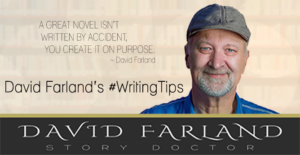Welcome to the final hours of our pre-NaNoWriMo time! There are many people who are out there right now, anxiety ridden and dreading the toll of midnight. But y’all, dear readers, should be ready. You should be pumped. Our bloggers and guests have shared a plethora of advice and their own experiences. Hopefully you found their insights useful. You’ve done your prep work, imagined the impossible, and planned your way through to success. You’re ready to climb the mountain.
But what if you are still nervous? I mean, NaNoWriMo is a huge commitment, right? The answer is that you write anyways. You put your butt in the chair, your fingers on the keyboard and you give it everything you have to give. Though there are people who sprint up mountains for fun (crazy, right?) I prefer a hike. A slow and steady plod will get you there just the same, no matter how loud those voices in your head yell that you can’t make it.
What if you aren’t done with your prewriting? You have at least another 965,439.27 hours of prewriting left to do. You have to work through the complete 17th volume of your world’s history, and you don’t know how your protagonist kept their hair in the third grade, and there are at least 60 constellations you have yet to name and invent complete mythologies for… What do you do then? You put your butt in the chair and fingers on the keyboard. At some point, prewriting time needs to be over. As one of my mentors, Kevin Anderson, said to a group of us at a seminar, “A book that doesn’t exist cannot be published.” The hard truth is that most books are never finished, they are abandoned. Start, work your hardest, and you’ll be surprised by what you can do.
But what if you miss a day? How could you possibly crest the 50,000 word peak if you lose your momentum… Step 1: You forgive yourself. Step 2: You put your but in the chair and your fingers on the keyboard. Seeing a theme? I once saw a nutritionist who told all her clients that meaningful change was a process. You only failed when you stopped trying, success being one choice away. You just had to keep choosing to fight. And you know what? It works just as well for writing as it does for losing 40 pounds.
So, all of us here at the Fictorians wish you the best in this year’s NaNoWriMo. Surprise yourself, discover that you are far better than you give yourself credit for, and work your way up that mountain. Know that you aren’t alone in this. Know that what you are about to do is really hard, but you have everything you need to do it. The view from the top will be worth the climb, I promise. First drafts need not be perfect, but they do need to be finished. Now, go forth and write!

